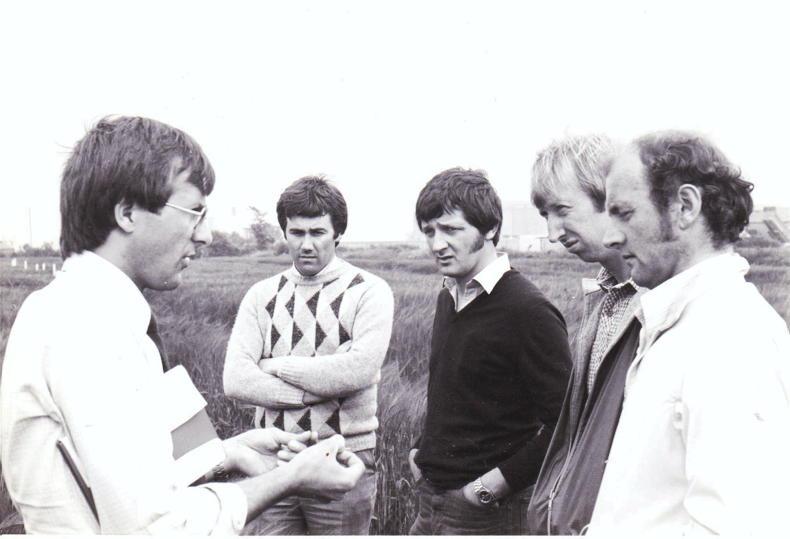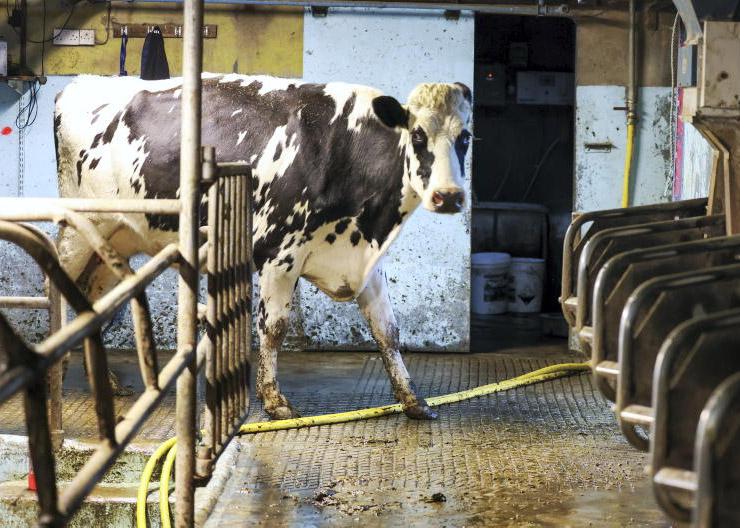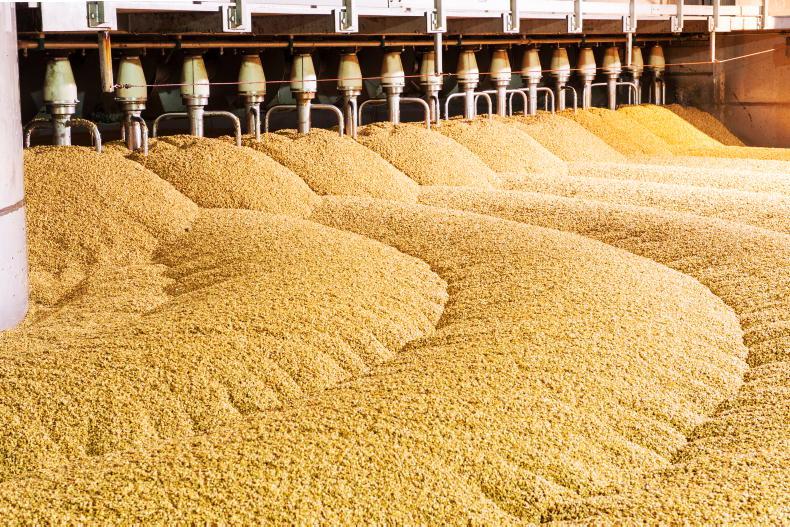Thirty three years in the Irish Farmers Journal and 10 before that in crop research in UCD. That’s a lot of changes but now it’s time for the changing of the guard and I want to wish Siobhán Walsh, growers and the whole tillage sector every good wish for the decades ahead.
Attempting to recall all the major events of those four-plus decades would seem a bit like trying to stuff an elephant into an egg. However, I would like to take the opportunity to recall some of the main happenings that dominated that timespan, at least as much as my memory recalls.
In doing this, I am not attempting to be accurate with products or dates but rather to recall what comes to mind.
The early years
I joined the tillage world in 1978 when Eamonn Gallagher (RIP) asked me to come to do a master’s degree in UCD at Lyons Estate.
This was a very exciting time in the tillage sector as we had only recently joined the EEC and higher prices were driving technology development and production systems.
The fungicide and plant protection era were just beginning then and while many of those early products had limited technical ability, they were relatively effective given the sensitivity of the natural population across all plant pathogens.
The major technology drivers of the time were unquestionably Professor René Laloux in Gembloux in Belgium and Professor Herman Effland in Schleswig-Holstein in northern Germany.
They were both drivers of high output production systems for winter crops using different approaches, neither of which was a perfect fit for Ireland. So, Teagasc (AFT at the time), UCD and farmers had to explore and develop systems that best suited Ireland.
At the time, my predecessor here in the Irish Farmers Journal, John Dardis, took a number of tours to visit these researchers and many growers who travelled at that time will remember their visits.
The plant protection sector
The Bayleton range from Bayer, based on the triazole triadimefon, was the first systemic product to offer good broadspectrum control. It was supplemented with MBC to more effectively target eyespot and captafol was added to help control septoria.
In the early years of its use, care had to be taken when spraying trials as minimal drift from one plot to another was enough to knock out disease on an unsprayed plot. This was due to the extreme sensitivity of pathogens to these new control agents.
However, this situation did not last too long and fungicide resistance began to evolve.
The first experiences were ethirimol-based seed dressings for mildew but then MBC became less effective against diseases such as eyespot and fusarium ear blight.
In time, Bayleton itself became less effective but there was a good pipeline of replacements coming through with new actives from the myriad of multinational companies that existed at the time.
Names such as May & Baker, Schering, ICI, Bayer, BASF, Ciba Geigy, DuPont, Hoechst, Rhone Poulenc, Dow, etc, gradually morphed into the bigger companies of today such as Bayer, BASF, Corteva, Syngenta etc.
Many new names have also emerged from Asian roots, which represent the story of scale, big business and the new molecule discovery challenge.
In time, Bayleton gave way to Tilt and that to Opus and now Revystar is the important technological active. In the late 1990s, we had the advent of the strobilurins with their fantastic fungicide performance, coupled with their other plant stimulatory effects, which helped bring crop performance to a new level.
These were wonderful products in their heyday but their power and success were usurped by the frequency of their use and nature’s fightback.
This saw septoria resistance overcome the power of the actives contained in products like Amistar and Opera.
The resistance to strobilurins in 2001 sent shockwaves through the plant protection industry. We were facing an adversary in septoria that could have caused the end of wheat production in this country, but it didn’t.
A return to the widespread use of Bravo (chlorothalonil), plus the advent of actives from the SDHI family, saved the day. They also came under pressure in time but the inclusion of Bravo in tank mixes helped to preserve their usefulness.
We must be aware that the supply chain of new actives is waning
More recently, we have seen the advent of even more sophisticated actives in Revystar and Inatreq with a few more good ones in the pipeline such as adepidyn.
However, we must be aware that the supply chain of new actives is waning, so these new actives need to be protected by all other tools and practices to help preserve their usefulness.
Standing back from this issue, we have little choice as growers but to adopt every possible IPM tool and technology to help remain in this war against nature.
We will lose more battles and so we need access to more tools, especially those from the technology stable deliverable through plant genetics. The writing is on the wall – we have to smell the roses.
Staying with diseases, it is important to state that there have been many instances of fungicide resistance in diseases, plus the increasing sophistication of the pathogens themselves.
Incidences of resistance have been common in powdery mildew, fusarium and microdochium, eyespot and net blotch, with varying shifts at times in rhyncho and late blight. The biggest single evolutionary change in cereals was in septoria.
Start
At the start of my career, the major septoria problem was glume blotch, an ear disease that caused leaf lesions and glume destruction on the head. This was the big yield robber in the 1970s.
A second disease from that family was Septoria tritici, which caused leaf blotching, mainly over the winter and early spring periods, and then it seemed to vanish or it was suppressed by its bigger sister.
Whatever the reasons, it was not seen as a major yield robber and could be ignored.
However, in the early 1980s the situation changed – the roles were virtually reversed.
In the space of 18 months, Septoria tritici had replaced Septoria nodorum as the major yield robbing fungus in wheat all around the world, an evolution that has never been adequately explained.
As tritici became better understood it was given a series of new Latin names to reflect its sophistication.
The genetics and plant breeding industry have also undergone huge changes.
We in Ireland had come from having our own breeding industry prior to EEC membership to then being dependent on access to the huge number of smaller plant breeders across Britain and Europe.
The Maris varieties from Cambridge were very important in the 1970s (Maris Huntsman) and 1980s (Maris Hobbit, Norman, Fenman, etc) for winter wheat while other breeders such as Nickersons, New Farm Crops and a range of European breeders held stronger positions in other crops and especially in later years.
There have been many iconic varieties during this timespan. I think of names like Hobbit, Igri, Hunter, Emma, Ark Royal, Digger, Midas, Goldspear, Triumph, Sicco and Planet. And then there was Barra oats.
I cut the first plots of Barra oats in Cork in the early 1980s and it went on to the recommended list in 1985. It remained on the recommended list until 2022 when it was withdrawn from the process due to the availability of better alternatives.
I came into the tillage sector with Barra and now I will go out with it – a remarkable performance in terms of duration for a modern variety.
Numbers’ game
Plant breeding is a numbers’ game and so many of these smaller breeders have since become part of bigger organisations, frequently driven by multinational chemical companies such as Bayer/Monsanto (Dekalb), Corteva (Pioneer), Syngenta, etc. However, there are others that are still primarily plant breeders such as KWS, RGT, SAAT, etc.
New breeding techniques have helped to make huge improvements in basic conventional plant breeding and the CRISPR-Cas tools in the modern toolbox have the potential to offer much more to the sector. We must hope that they will be made available soon in the EU and not suffer the same fate as the GMOs.

Dr Max Landers, BASF Germany; Anthony Larkin, Denis Coakley Ltd and later BASF Germany, Sammy Houlihan, John Murphy and Leslie Pearson, all from Rathangan, Co Kildare at a trials visit back in the 1980s.
One of the momentous changes in the tillage sector was the demise of the sugar beet industry following 2005.
Different stories will tell of the many diverse angles to this saga but it hinged around the closure of the Carlow Sugar factory to make way for development potential while expanding the capacity in Mallow, the only remaining factory of the four originals – Tuam, Thurles, Mallow and Carlow.
Mallow was not the problem – transport was, or at least it was seen as a very important one.
The payment model of the day paid a transport bonus for delivery based on distance from a factory but that was insufficient to move beet from growers in counties like Carlow, Tipperary, Kildare, Laois and even Dublin and Meath.
The closure of the plant in Carlow was prompted by a reduction in the national sugar quota. This was driven by the EU’s “Everything but Arms (EBA)” initiative under which Least Developed Countries could send exports to the EU that were both duty-free and quota-free, with the exception of armaments, to help develop their economies. This included sugar and when the EBA came into being on 5 March 2001, the EU had to rebalance its internal production quotas.
The need to cut internal production meant a reduction in internal sugar quotas and the introduction of a compensation scheme for factories that would close.

Professor Herman Effland who developed the Schleswig-Holstein system in northern Germany.
This quickly split grower opinion here into those who saw transport as a major obstacle and who wanted to avail of compensation while those closer to the factory (and others) wanted the industry to remain.
Carlow had closed prior to the compensation announcement so it did not qualify and pressure built to close Mallow.
Meanwhile, sugar customers were feeling vulnerable and foreign companies began to offer imported sugar. A failure to commit to grow beet in 2006 meant that Irish Sugar could not guarantee to meet its customers’ requirements and the decision was taken to close Mallow.
Perhaps one of the mistakes here was the willingness of the Minister for Agriculture of the day to forfeit the golden share, which was essential for any decision by the company.
If realistic talks had to progress, it is possible that a transport model could have been agreed which was workable for most growers but the reality was that compensation was only available if the one remaining factory closed so compensation fever began to rage.
The loss of the beet enterprise remains a financial and strategic loss to the tillage sector because it had been fundamentally profitable.
The plant protection sector saw huge rationalisation over the past four decades.There were significant changes in the sensitivity of fungi to fungicides and even in the significance of diseases.There has also been huge rationalisation across the plant breeding sector, plus the introduction of new breeding techniques to help focus on desired traits. The loss of the sugar beet industry was a major blow to the financial wellbeing of the tillage sector.
Thirty three years in the Irish Farmers Journal and 10 before that in crop research in UCD. That’s a lot of changes but now it’s time for the changing of the guard and I want to wish Siobhán Walsh, growers and the whole tillage sector every good wish for the decades ahead.
Attempting to recall all the major events of those four-plus decades would seem a bit like trying to stuff an elephant into an egg. However, I would like to take the opportunity to recall some of the main happenings that dominated that timespan, at least as much as my memory recalls.
In doing this, I am not attempting to be accurate with products or dates but rather to recall what comes to mind.
The early years
I joined the tillage world in 1978 when Eamonn Gallagher (RIP) asked me to come to do a master’s degree in UCD at Lyons Estate.
This was a very exciting time in the tillage sector as we had only recently joined the EEC and higher prices were driving technology development and production systems.
The fungicide and plant protection era were just beginning then and while many of those early products had limited technical ability, they were relatively effective given the sensitivity of the natural population across all plant pathogens.
The major technology drivers of the time were unquestionably Professor René Laloux in Gembloux in Belgium and Professor Herman Effland in Schleswig-Holstein in northern Germany.
They were both drivers of high output production systems for winter crops using different approaches, neither of which was a perfect fit for Ireland. So, Teagasc (AFT at the time), UCD and farmers had to explore and develop systems that best suited Ireland.
At the time, my predecessor here in the Irish Farmers Journal, John Dardis, took a number of tours to visit these researchers and many growers who travelled at that time will remember their visits.
The plant protection sector
The Bayleton range from Bayer, based on the triazole triadimefon, was the first systemic product to offer good broadspectrum control. It was supplemented with MBC to more effectively target eyespot and captafol was added to help control septoria.
In the early years of its use, care had to be taken when spraying trials as minimal drift from one plot to another was enough to knock out disease on an unsprayed plot. This was due to the extreme sensitivity of pathogens to these new control agents.
However, this situation did not last too long and fungicide resistance began to evolve.
The first experiences were ethirimol-based seed dressings for mildew but then MBC became less effective against diseases such as eyespot and fusarium ear blight.
In time, Bayleton itself became less effective but there was a good pipeline of replacements coming through with new actives from the myriad of multinational companies that existed at the time.
Names such as May & Baker, Schering, ICI, Bayer, BASF, Ciba Geigy, DuPont, Hoechst, Rhone Poulenc, Dow, etc, gradually morphed into the bigger companies of today such as Bayer, BASF, Corteva, Syngenta etc.
Many new names have also emerged from Asian roots, which represent the story of scale, big business and the new molecule discovery challenge.
In time, Bayleton gave way to Tilt and that to Opus and now Revystar is the important technological active. In the late 1990s, we had the advent of the strobilurins with their fantastic fungicide performance, coupled with their other plant stimulatory effects, which helped bring crop performance to a new level.
These were wonderful products in their heyday but their power and success were usurped by the frequency of their use and nature’s fightback.
This saw septoria resistance overcome the power of the actives contained in products like Amistar and Opera.
The resistance to strobilurins in 2001 sent shockwaves through the plant protection industry. We were facing an adversary in septoria that could have caused the end of wheat production in this country, but it didn’t.
A return to the widespread use of Bravo (chlorothalonil), plus the advent of actives from the SDHI family, saved the day. They also came under pressure in time but the inclusion of Bravo in tank mixes helped to preserve their usefulness.
We must be aware that the supply chain of new actives is waning
More recently, we have seen the advent of even more sophisticated actives in Revystar and Inatreq with a few more good ones in the pipeline such as adepidyn.
However, we must be aware that the supply chain of new actives is waning, so these new actives need to be protected by all other tools and practices to help preserve their usefulness.
Standing back from this issue, we have little choice as growers but to adopt every possible IPM tool and technology to help remain in this war against nature.
We will lose more battles and so we need access to more tools, especially those from the technology stable deliverable through plant genetics. The writing is on the wall – we have to smell the roses.
Staying with diseases, it is important to state that there have been many instances of fungicide resistance in diseases, plus the increasing sophistication of the pathogens themselves.
Incidences of resistance have been common in powdery mildew, fusarium and microdochium, eyespot and net blotch, with varying shifts at times in rhyncho and late blight. The biggest single evolutionary change in cereals was in septoria.
Start
At the start of my career, the major septoria problem was glume blotch, an ear disease that caused leaf lesions and glume destruction on the head. This was the big yield robber in the 1970s.
A second disease from that family was Septoria tritici, which caused leaf blotching, mainly over the winter and early spring periods, and then it seemed to vanish or it was suppressed by its bigger sister.
Whatever the reasons, it was not seen as a major yield robber and could be ignored.
However, in the early 1980s the situation changed – the roles were virtually reversed.
In the space of 18 months, Septoria tritici had replaced Septoria nodorum as the major yield robbing fungus in wheat all around the world, an evolution that has never been adequately explained.
As tritici became better understood it was given a series of new Latin names to reflect its sophistication.
The genetics and plant breeding industry have also undergone huge changes.
We in Ireland had come from having our own breeding industry prior to EEC membership to then being dependent on access to the huge number of smaller plant breeders across Britain and Europe.
The Maris varieties from Cambridge were very important in the 1970s (Maris Huntsman) and 1980s (Maris Hobbit, Norman, Fenman, etc) for winter wheat while other breeders such as Nickersons, New Farm Crops and a range of European breeders held stronger positions in other crops and especially in later years.
There have been many iconic varieties during this timespan. I think of names like Hobbit, Igri, Hunter, Emma, Ark Royal, Digger, Midas, Goldspear, Triumph, Sicco and Planet. And then there was Barra oats.
I cut the first plots of Barra oats in Cork in the early 1980s and it went on to the recommended list in 1985. It remained on the recommended list until 2022 when it was withdrawn from the process due to the availability of better alternatives.
I came into the tillage sector with Barra and now I will go out with it – a remarkable performance in terms of duration for a modern variety.
Numbers’ game
Plant breeding is a numbers’ game and so many of these smaller breeders have since become part of bigger organisations, frequently driven by multinational chemical companies such as Bayer/Monsanto (Dekalb), Corteva (Pioneer), Syngenta, etc. However, there are others that are still primarily plant breeders such as KWS, RGT, SAAT, etc.
New breeding techniques have helped to make huge improvements in basic conventional plant breeding and the CRISPR-Cas tools in the modern toolbox have the potential to offer much more to the sector. We must hope that they will be made available soon in the EU and not suffer the same fate as the GMOs.

Dr Max Landers, BASF Germany; Anthony Larkin, Denis Coakley Ltd and later BASF Germany, Sammy Houlihan, John Murphy and Leslie Pearson, all from Rathangan, Co Kildare at a trials visit back in the 1980s.
One of the momentous changes in the tillage sector was the demise of the sugar beet industry following 2005.
Different stories will tell of the many diverse angles to this saga but it hinged around the closure of the Carlow Sugar factory to make way for development potential while expanding the capacity in Mallow, the only remaining factory of the four originals – Tuam, Thurles, Mallow and Carlow.
Mallow was not the problem – transport was, or at least it was seen as a very important one.
The payment model of the day paid a transport bonus for delivery based on distance from a factory but that was insufficient to move beet from growers in counties like Carlow, Tipperary, Kildare, Laois and even Dublin and Meath.
The closure of the plant in Carlow was prompted by a reduction in the national sugar quota. This was driven by the EU’s “Everything but Arms (EBA)” initiative under which Least Developed Countries could send exports to the EU that were both duty-free and quota-free, with the exception of armaments, to help develop their economies. This included sugar and when the EBA came into being on 5 March 2001, the EU had to rebalance its internal production quotas.
The need to cut internal production meant a reduction in internal sugar quotas and the introduction of a compensation scheme for factories that would close.

Professor Herman Effland who developed the Schleswig-Holstein system in northern Germany.
This quickly split grower opinion here into those who saw transport as a major obstacle and who wanted to avail of compensation while those closer to the factory (and others) wanted the industry to remain.
Carlow had closed prior to the compensation announcement so it did not qualify and pressure built to close Mallow.
Meanwhile, sugar customers were feeling vulnerable and foreign companies began to offer imported sugar. A failure to commit to grow beet in 2006 meant that Irish Sugar could not guarantee to meet its customers’ requirements and the decision was taken to close Mallow.
Perhaps one of the mistakes here was the willingness of the Minister for Agriculture of the day to forfeit the golden share, which was essential for any decision by the company.
If realistic talks had to progress, it is possible that a transport model could have been agreed which was workable for most growers but the reality was that compensation was only available if the one remaining factory closed so compensation fever began to rage.
The loss of the beet enterprise remains a financial and strategic loss to the tillage sector because it had been fundamentally profitable.
The plant protection sector saw huge rationalisation over the past four decades.There were significant changes in the sensitivity of fungi to fungicides and even in the significance of diseases.There has also been huge rationalisation across the plant breeding sector, plus the introduction of new breeding techniques to help focus on desired traits. The loss of the sugar beet industry was a major blow to the financial wellbeing of the tillage sector. 











SHARING OPTIONS